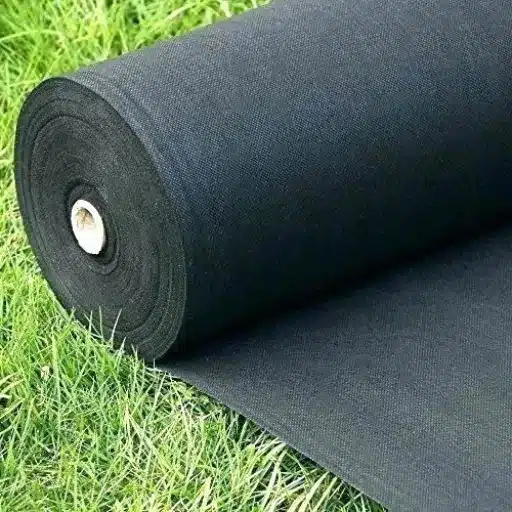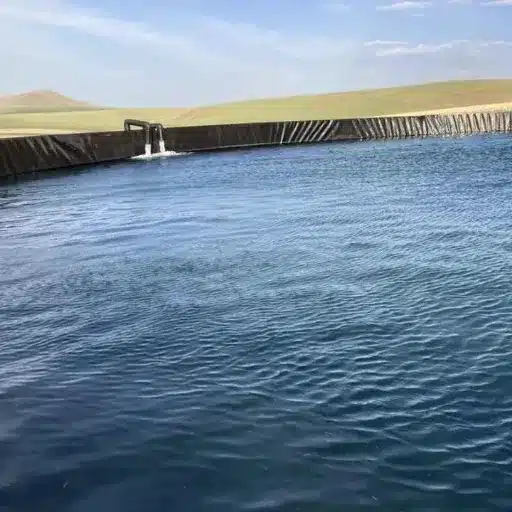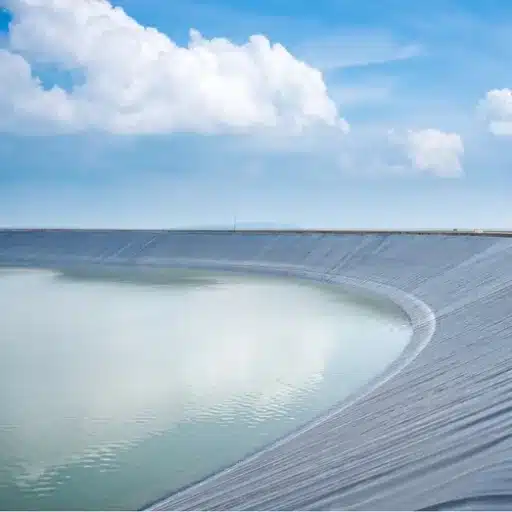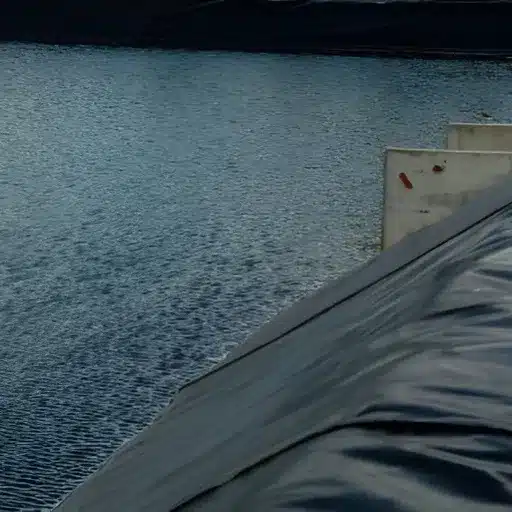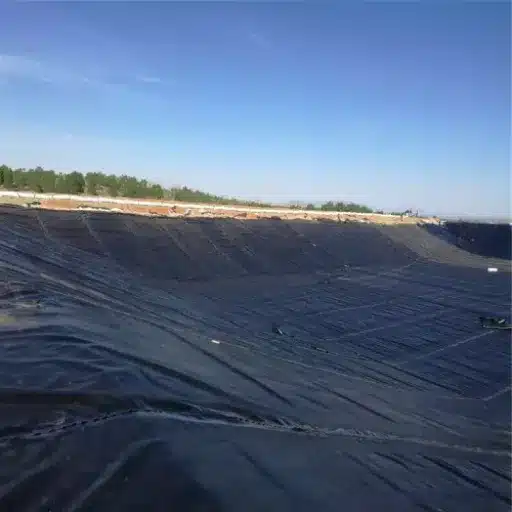How do I protect my lawn from heavy equipment? A lot of hard work goes into keeping an immaculate and healthy lawn, weighing on the spirits when the threatening rolling thunder of big machinery pitches into a loud cacophony across the house and garden. For paving a construction site, an overhaul in landscaping, or simple yard maintenance, trying to protect your lawn from possible machinery damage could weigh heavily on your mind. In this article, more strategies will be given to guard your turf, minimize damage, and keep your yard from getting trashed under the pressure of weighty tools and equipment; finally, efficient tips will allow you to undertake any project confidently without damaging your lawn.
Why Use Lawn Protection Mats?
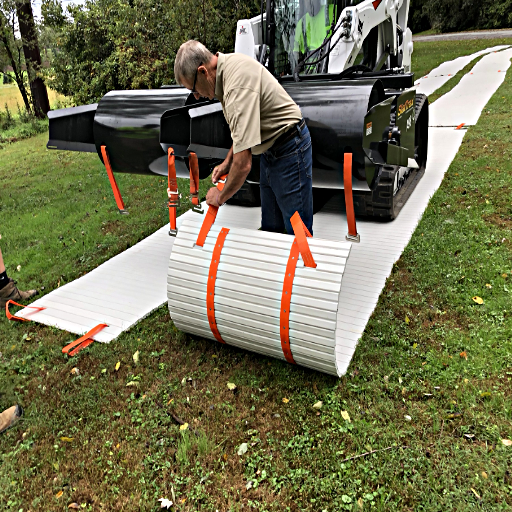
During projects, lawn protection mats save your grass from marring by heavy machinery and human foot traffic. They create a very sturdy, protective barrier that helps distribute weight evenly, reducing soil compaction or preventing the formation of ruts or torn turf. The mats are indeed sturdy and reusable, which comes in handy when needing easy installation on any lawn project.
What are Ground Protection Mats?
Ground protection mats serve as heavy-duty coverings placed over the land to shield it from damage caused by heavy machinery, vehicles, or people walking barefoot in any construction, landscaping, or outdoor project. The mats are likely to be crafted from high-density polyethylene (HDPE), which is tough as nails and malleable while also being proven resistant to wear over time.
Whenever we track away and the landscape is something we wish to keep preserved, in this case, the fortress would be a collection of ground protection mats that effectively compensate for the impact. They resist soil compression by distributing weight across the surface more uniformly to prevent additional turning forces on the terrain, displacing it more through the development of cracks, holes, and other means of alteration. Such buffers are therefore highly utilized on many susceptible surfaces like grass, soil, and even compacted gravel places by people. Over 120 tons of weight can be placed on the HDPE mats by cranes, trucks, and other large equipment employed in the construction industry.
There are different ranges of these mats in terms of sizes and thickness-efficiency, with some designs, irrespective of the mat thickness, allowing one mat to fit or securely attach to another, hence no skidding. These mats are essentially user-friendly and can be installed anywhere, making them very attractive as they reduce the stress of installation and the causes of pollution. This also happens when protective mats must cover construction sites, roadways, sites where events occur, any audit where excavation is planned, and prospective prevention of hazards within the premises is needed.
Ground protection mats market shows rapid growth mainly because of the change in the tools used in doing infrastructure works, and at the same time, there has been a need to address the adverse environmental effects caused by these activities. The consultants project that the global ground protection mats market will have a value of $ 700 million in the year 2030, which underlines this sector’s importance in construction and protection of the natural environment.
How do Lawn Protection Mats minimize Lawn Damage?
A primary purpose of lawn protector mats is to protect the surfacing by providing a weight distribution system on level surfaces, decreasing the possibility of soil compaction, and protecting the lawn from destruction due to the pressure exerted by heavy machinery and people. Mattresses used in lawn care, especially those used in hardscape projects, are often based on heavy materials such as HDPE (high-density polyethylene), which provides resistance to bending even under heavy loads. They function by actively resisting marring and other damages associated with prolonged use by keeping the equipment off the ground plane.
Modern lawn protection systems, maintenance, and outdoor activities are also popular among users as they ensure high security for machines or persons even when used in wet, muddy, or slippery conditions. Thus, this prevents the jute grass and the surrounding soil from being rooted in shock. It is also reported that there is a possibility of 70% savings on groundwork costs whenever these mats are applied, especially in heavy use such as construction, landscaping, and events, which can cause damage.
Also, these mats are very mobile in that they can be easily moved from one place to another; hence, there is no or very minimal delay at the working station. Still other systems proceed to eco-friendly manipulations in terms of their composition, stepping efficiencies even further. For example, thermal treatments and prospective contaminating content may be minimized due to the recoverable or “eco” mats that have proven economic return over 10 years or more, thus lessening the need for purchase optimization. These developments in the UV-proof protection of greenscapes induce the use of other infrastructural services and make the conversion of green surfaces into a comprehensive sector.
Benefits of Using Mats for Heavy Equipment
- Protection about Ground Surfaces
One of the most significant contributing factors to soil, ground, and lawn damage is heavy machinery or equipment use. When this equipment is placed on mats, pressure is spread all over the surface, lowering soil compaction and reducing the appearance of wheel marks. Studies have shown that mats can reduce ground damage by up to 75%.
- Increased Security
Mats make heavy equipment use extremely safe, especially in places where slipping on a wet or unsecured ground surface is likely. This ensures that equipment operators and on-site personnel are in a secure environment.
- High Load Consolation
Mats can support heavy machinery, enabling it to perform its duty without stressing the ground. This is important in wet or marshy areas where heavy machinery may root up or tip over due to uneven weight distribution. Mats can help in such instances.
- Diminished Negative Impact
When needing to close, all reused materials, such as eco-friendly mats, are taken as required. No equilibrium shall be damaged due to the area’s construction, and eco mats are also used in land works. On the contrary, wildlife habitats are lost, and false works are added to the air once these operations are conducted.
- Cutting costs
Opting not to incorporate these products may result in higher costs when it implies demanding scrapping and replacement of surfaces such as grounds or exteriors of buildings. According to research, organizations that use mats have reduced the cost of carrying out repairs and restorations by 30%, and mats are also said to reduce the costs of operations.
What Types of Mats are Available?
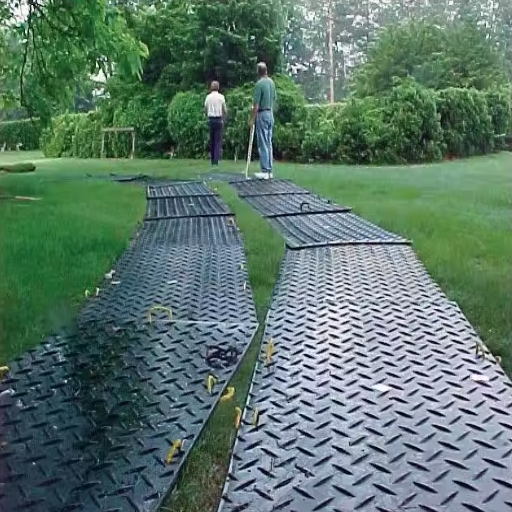
There are numerous categories of barriers available for various applications:
- Temporary Covers
‘Tree Hugger’ wheel holes are more popular than the steel ‘construction’ plates for this use. The ‘tree hugger‘ holes are also smaller and concaved to the height of a thin tire, so machinery and trucks can pass over them much more quickly than cutting steel back in for wheels. Such holes are also simple to break and can be fixed by moving heavy equipment over uneven surfaces without damaging the surfaces.
- Cradles
Designed to distribute loads away from environmentally disturbed areas, cradles are used in a wide variety of places.
- Access Panels
Corrosion is a factor that is usually combined with 304 stainless steel gray offshore shipping primer, mounding, and grating.
- Containment Mattresses
MMPE Nylon is available as an additional liner. It may not always be available, but it almost will be—that is better than nothing. MMPE is also used to line the containment mattress bottom under the product.
Depending on the intended use of each, mats of every kind have been developed for efficiency and effectiveness in various other uses.
Different Types of Ground Protection Mats
Ground protection mats glide on heavyweight stuff along the ground, softening impacts on the materials underneath using its deliverance technology to constituents suffering from it.
| Type | Material | Durability | Traction | Use | Weight |
|---|---|---|---|---|---|
| HDPE | Polyethylene | High | Non-slip | Heavy machinery | Lightweight |
| Composite | Mixed | Very High | Interlocking | Industrial sites | Moderate |
| Rubber | Rubber | Moderate | High | Pedestrian paths | Heavy |
When to Use Plywood vs. Grass Protection Mats
Quality and high-cost projects will require other products, like grass protection mats, which are mainly preferred for their high standard, maintenance, and affordable permanency.
| Parameter | Plywood | Grass Mats |
|---|---|---|
| Durability | Short lifespan | Long-lasting |
| Cost | Low upfront | High upfront |
| Safety | Slippery when wet | Non-slip surface |
| Weight | Heavy, absorbs water | Lightweight |
| Eco Impact | Deforestation | Recyclable |
| Ease of Use | Hard to handle | Easy to install |
| Versatility | Limited | High adaptability |
| Maintenance | Frequent | Minimal |
Choosing the Right Heavy Equipment Mats
Many issues are considered when selecting the ideal heavy equipment mat. The type of equipment to be used, the working environment and conditions, the objectives of the project, and the budgetary concerns are all taken into account. If the ground conditions are soft or undulating, the most suitable mat is a heavy-duty timber mat because of its superior load-bearing and stability abilities.
Instead, lightly weighted projects with eco-friendly products that can be easily reused can use composite mats. The duration that the equipment is used, the number of times, the weight the load can carry, and of course, whether there is an importance for preserving nature are other things that should be considered. By looking at such factors appropriately, you can ensure the equipment works as expected and the environment is not damaged.
How Can You Protect Your Lawn During Construction Projects?
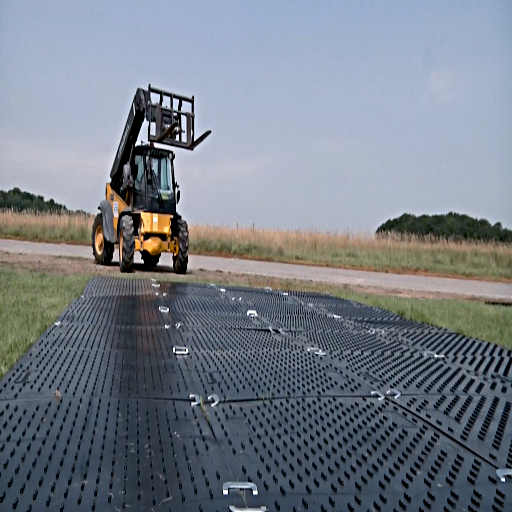
Ground protection mats are a great way to ensure that heavy machinery activities do not destroy the grass and soil on a construction site. You can also stop these machinery operators from destroying or compacting the soil by showing the patterns of the lawns that are off limits to the foot and the operating machinery and equipment. So, as it does not create any traffic distress, grass care instructions are to edit the grass two days before the new building commences.
To prevent this problem from exacerbating, it is better to water the soil evenly before the foundation work starts. After construction, restore the soil by putting figures on it; step on it and roll it down to boost fresh grass growth. These precautions will minimize impacts, and the lawn will return to green.
Best Practices for Using Heavy Machinery
- Conduct regular services
Regular care and maintenance of all equipment are essential. Valves such as the hydraulic system, engine, and brakes must be routinely inspected to prevent unexpected breakdowns. This helps to avert any possible fault that may break down the equipment and further prolong its useful life.
- Have the Operator Onboard and Competent
One must ensure that only workers trained to do so and with proper licenses can use heavy machines. Without extensive training, operators know how the controls are expected to operate, the necessary safety measures, and the operational capabilities of the disasters.
- Assess the Jobsite
Every site has its peculiarities. An in-depth inspection is necessary to determine the worksite’s hazards, such as uneven topography, utilities, work below, and restricted areas. This is essential in safely and adequately assigning work to machinery and the people who work in it.
- Observe Limits of Loading
Do not attempt to fit more than the maximum load of the equipment involved at any one time. Doing so can make the machine even less stable, put more strain on existing parts, and, in the worst situation, cause an accident.
- Everyone Must Follow Safety Rules and Regulations
Everyone close to the machines, including the operators, must be dressed in special suits, helmets, rain jackets, reflective bodies, safety belts, and other safety protections while work is in progress. Some posts showing that machines are being used are usually placed on the construction site to inform everyone about the presence of machinery.
How to Lay Down a Temporary Road on Your Lawn
Creating a temporary road on a meadow can be a very effective way of preventing the turf from getting damaged. On the other hand, it helps provide a firm pathway for efficiently using vehicles or machinery. IT will be executed in the following steps:
- Study the Site to Design the Location:
Identify the best course while ensuring that the beauty of the lawn is not destroyed. Ideally, the path should avoid areas where tender plants are exposed, such as flower beds, irrigation systems, and tree roots.
- Select Suitable Material>/h3>
Other long-lasting materials like tiles, chip boards, and gravel may be recommended to heighten the service life. Mats are an appropriate choice in most construction work due to their strength for larger-scale works and their lightweight. At the same time, gravel offers sturdiness for a more extended period.
- Assemble. The Place Is Ready
The lawn you wish to protect should have been cut uniformly for the mowed height, and all the rocks, twigs, and other waste should have been removed. Where not, the geotextile fabric should be installed to support or protect the sands from being immersed in the soil.
- Place The Temporary Road Materials
On the other hand, position the materials as per the sketch made. ‘T’ the segments together properly and check that they are stable to avoid parts sinking under weight. Apply the gravel evenly for gravel roads and use a roller or compactor to pack it.
- Maintain the temporary road: Keep the Temporary Road.
Assess the erosion of the aggregate or the relief of the embankment during or after heavy rains from time to time, especially in areas of heavy distribution. Act appropriately to avoid causing damage, knowing that the effort put into creating the temporary road is massive. This also exposes the road and the turf to other risks in those sections that may require repairs.
If the temporary road is no longer used, caution should be taken when removing the materials so that the lawn can be cared for by aerating, reseeding, and watering to promote further growth.
Using Track Mats for Skid Steer Vehicles
Planning and controlling access to the site is essential when operating skid steer loaders, especially in complicated terrains. Some of these mats also increase friction as protection to the existing surfaces, plus minimize the incidence of machinery subsiding or sinking in adverse conditions, e.g., doing work in mud, on a dormitory, on a beach, etc.
Track mats also minimize site impact as the weight of the loader is distributed throughout the length of the loader and its load, hence preventing the ground from scalping or forming craters, particularly on lawns, on construction sites, or other no-go areas where this may not be acceptable. Moreover, they are convenient because they will also last for a long time and are safe for the environment. This is ideal for projects involving the additional costs or risks of moving equipment around surfaces that can be easily damaged or in motion. Moreover, the fasteners provided also do not require expert fitting, which reduces the time taken to finish the tasks efficiently with the help of Birkhaug et al. (2018.
What to Do If Your Lawn is Already Damaged?
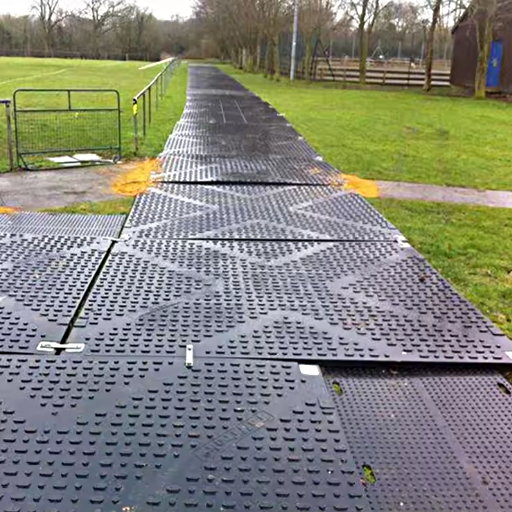
If your yard is already damaged, implement the following steps to ensure its full recovery:
- Damage Assessment
To identify the degree of the problem, inspect the areas where the issue is awkward.
- Aerate the Soil
A garden spade or aerator will help effectively break in hardened soil, allowing moisture and nutrients to reach the roots of the grass plants.
- Get Rid of The Dead Grass and Debris
Use a rake in the area undergoing damage to remove the overgrown grass, plants, and other unwanted vegetation. A clear surface helps the growth of new grass.
- Replant Or Plant Sod Again
For smaller portions, you may apply grass seeds suitable for the grass type. In the case of significant damage, you may consider planting sod because it gives faster results. Ensure there is good soil contact with the seed or sod.
- Consistently Water
Water the location lightly regularly to assist in germination and root growth. Avoid overwatering to prevent the development of fungus or root rot.
- Fertilize and Sustain
A well-balanced fertilizer is typically added to ensure the plants stay healthy and grow as required. As soon as the vegetation resurges, it is supposed to be carefully trained and kept to avoid any future damage.
With time, you can restore and maintain your lawn’s health.
Identifying Rut Damage on Your Lawn
One of the most common signs of rut damage on your lawn is the appearance of narrow and lengthy tracks or grooves that deteriorate progressively. These ruts mainly form compacted earth and may also hinder the completion of grass growth. An art that is best practiced is Ascertaining root damage on your lawn; look at the grass, any blades of grass that appear flattened or have problems growing back up, or touch your bare feet to the surface – it should be hard and green. The positive aspect of seeing such ravages early is to contain them instantly. This saves the turf and removes the damage.
Using Turf Protection Mats for Restoration
The use of grass protectors, plantations, and civil works sustains the water requirements of the plants in the paving of green expanses. It is essential to select plants in this application in such a way as to match the site requirements and topography. In case of bituminous pavements or soil filled with gravel at the confluence of surface drainage, it is relatively easy to plant vegetation after the grass cover. Whereas for the improvement of the soil or green areas above this bituminous film, it is challenging to grow the vegetation in the desired direction.
Reference Sources
- Wire Rope Isolators for the Vibration Protection of Heavy Equipment: Exploratory Research
- Authors: M. Leblouba, P. S. Balaji, M. E. Rahman
- Published: December 13, 2022
- Summary: This study investigates wire rope isolators (WRIs) that dissipate vibrational energy, which can be crucial in protecting sensitive environments, including lawns, from vibrations caused by heavy machinery. The research proposes two new configurations for WRIs, namely spring-WRI (S-WRI) and double-WRI (D-WRI), which enhance stiffness and damping properties. The findings suggest that these configurations can effectively reduce the impact of vibrations on surrounding areas, potentially protecting lawns from damage caused by heavy equipment operations.
- Methodology: The study involved monotonic and quasi-static cyclic loading tests on conventional and proposed WRI variants to assess their performance in vibration isolation(Leblouba et al., 2022).
- Dynamic Ground Pressure Prediction of Heavy-Duty Construction Vehicles Considering Crawler Parameters
- Authors: Tiangang Pei, B. Yan, Zekun Liu, Zhangda Zhao
- Published: February 18, 2023
- Summary: This research focuses on predicting the dynamic ground pressure exerted by heavy-duty construction vehicles, which is critical for understanding how such equipment affects the ground beneath it, including lawns. The study emphasizes the importance of crawler parameters in determining ground pressure, which can inform strategies to minimize lawn damage during construction activities.
- Methodology: The authors developed predictive models that consider various parameters of heavy-duty vehicles to assess their impact on ground pressure(Pei et al., 2023, pp. 1–13).
- Heavy Equipment Maintenance Wastes and Environmental Management in the Mining Industry
- Author: T. Guerin
- Published: October 1, 2002 (not within the last 5 years but relevant)
- Summary: This paper discusses the environmental impacts of heavy equipment maintenance, including waste management, that can affect surrounding areas, such as lawns. While it does not focus specifically on lawn protection, it highlights the need for proper management practices to mitigate environmental damage.
- Methodology: The study reviewed various treatment technologies and practices for managing oily wastewater and maintenance wastes in mining operations(Guerin, 2002, pp. 185–199).
- Top Ground Protection Mats Suppliers in China
Frequently Asked Questions (FAQs)
Q: What are ground protection mats, and how do they protect a lawn?
A: Ground protection mats are heavy-duty mats designed to distribute the weight of vehicles and equipment over a larger area, helping to prevent lawn damage. Using these mats, you can protect grass and maintain the integrity of your yard during heavy construction or landscaping projects.
Q: Can yard protection mats prevent lawn damage?
A: Yes, yard protection mats can help prevent lawn damage. They are specifically designed to support the weight of heavy equipment, thus minimizing the impact on the grass and soil beneath.
Q: What types of equipment can I use with ground protection mats?
A: Ground protection mats are suitable for various vehicles and equipment, including heavy construction machines, skid steers, and other heavy-duty vehicles. These mats are essential when working in sensitive areas to protect the lawn.
Q: How do ground protection mats lock together?
A: Many ground protection mats are designed with interlocking features that allow them to connect securely. This helps create a stable surface for vehicles and equipment, ensuring that the mats can help protect grass during operations.
Q: Are there specific sizes for protection mats for heavy equipment?
A: Ground protection mats come in various sizes, with 4×8 feet being a standard dimension. This size is ideal for accommodating different types of equipment while providing adequate coverage to protect your lawn.
Q: What materials are ground protection mats made from?
A: Ground protection mats are typically made from durable materials such as high-density polyethylene (HDPE) or heavy-duty plastic. These materials are designed to withstand the weight of heavy construction equipment while providing a sturdy surface that helps protect grass.
Q: How do I choose the right ground mats for my project?
A: When choosing ground protection mats, consider the weight of the heavy equipment you will be using, the terrain of your yard, and the level of protection you need. Heavy-duty mats will offer more support and less damage than lighter options.
Q: Can I use plywood sheets instead of ground protection mats?
A: While plywood sheets can provide some protection, they are less effective than heavy-duty ground protection mats. Mats offer superior weight distribution and are designed to protect lawns during heavy equipment usage.
Q: What are the benefits of using ground protection mats for my lawn?
A: Ground protection mats minimize lawn damage, provide a stable vehicle surface, and allow for easier access in sensitive areas. They can also ensure your yard remains intact while accommodating heavy equipment.

